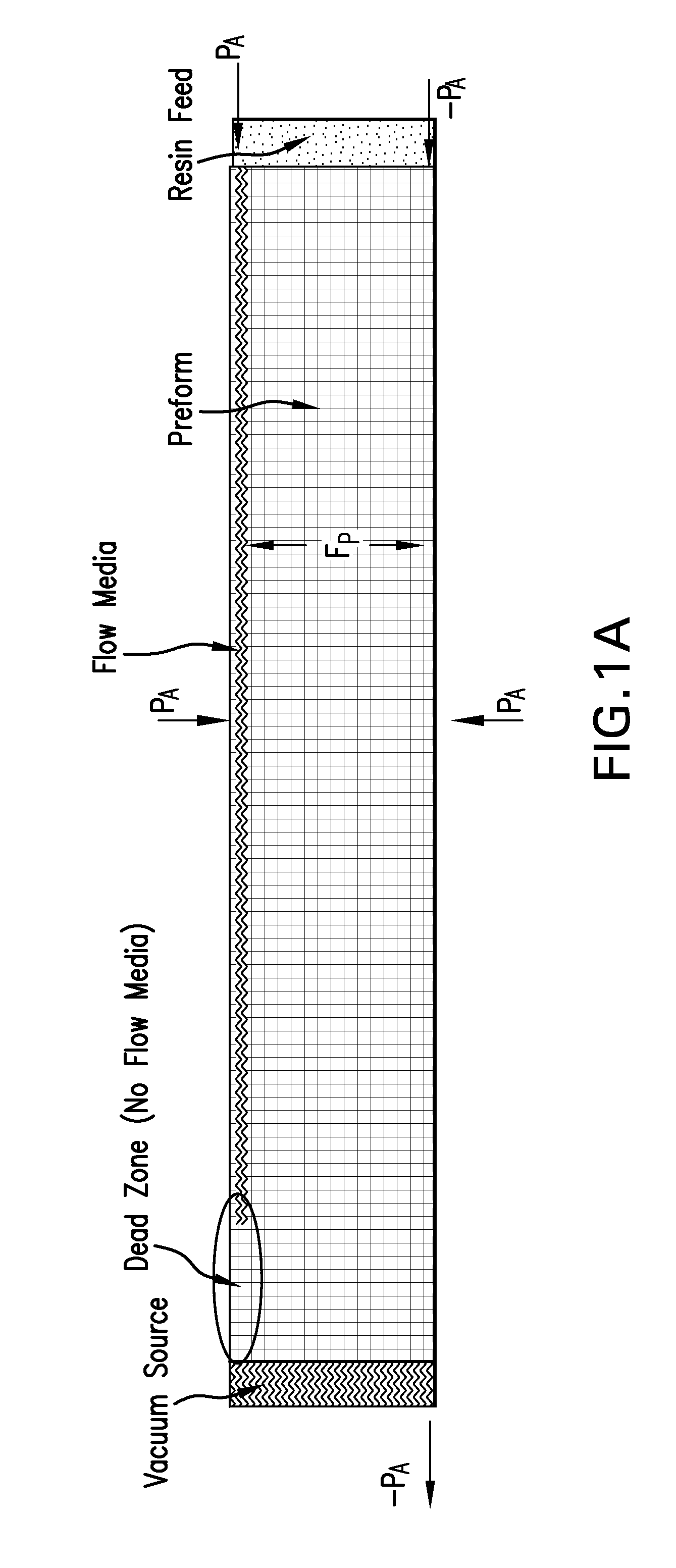Constant pressure infusion process for resin transfer molding
a technology of resin transfer molding and infusion process, which is applied in the direction of transportation and packaging, butter manufacturing, other domestic articles, etc., can solve the problems of reducing the overall strength and quality of the composite so manufactured, reducing the cost of fabricating prepregs, and each of these processes may be problematic, so as to increase the strength and quality of the composite. , the effect of low porosity and high fiber volume fraction
- Summary
- Abstract
- Description
- Claims
- Application Information
AI Technical Summary
Benefits of technology
Problems solved by technology
Method used
Image
Examples
example 1
[0072]A single part epoxy resin system (Cytec Engineered Materials CYCOM 977-20) was used, which exhibits a very high viscosity at room temperature but has a low viscosity and long pot life at an elevated temperature. This resin was initially packaged into polypropelene plastic bags in quantities ranging from 250 grams to 1000 grams. These bags were heat sealed in such a manner that at one end there was a constriction allowing for insertion of a tube once cut. Polypropylene is an acceptable material for use in the desired cure cycle for CYCOM 977-20. This pre-packaged collapsible resin reservoir was then placed next to the preform on the tool and a feed line was connected from the reservoir to the feed line of the preform. The preform was bagged per a typical infusion scheme which incorporates a resin bleed system and a vacuum bag was placed over the preform and the resin reservoir as shown in FIG. 2A. The preform was debulked and compacted and then checked for leaks and readied for...
example 2
[0074]The same single part epoxy resin and resin bags were used as in Example 1 to infuse a much larger component. The component was set up and bagged according to FIG. 2B which incorporated a standard infusion bagging scheme with a resin bleed system. To infuse this component, multiple resin reservoirs were used that were linked or daisy-chained together in order to deliver adequate resin and completely infuse the preform. The process yielded aerospace quality laminates with minimum variation.
example 3
[0075]The same single part epoxy resin used in Examples 1-2 was used to make a more complicated component that incorporated some stiffening members. The component was set up with floating cauls to support the stiffeners and was bagged according to FIG. 2C. As shown, the resin reservoirs were located next to the floating cauls in order to feed resin in the desired location. The process again yielded an aerospace quality laminate with minimum variation.
PUM
| Property | Measurement | Unit |
|---|---|---|
| temperature | aaaaa | aaaaa |
| vacuum pressure | aaaaa | aaaaa |
| pressure | aaaaa | aaaaa |
Abstract
Description
Claims
Application Information
 Login to View More
Login to View More - R&D
- Intellectual Property
- Life Sciences
- Materials
- Tech Scout
- Unparalleled Data Quality
- Higher Quality Content
- 60% Fewer Hallucinations
Browse by: Latest US Patents, China's latest patents, Technical Efficacy Thesaurus, Application Domain, Technology Topic, Popular Technical Reports.
© 2025 PatSnap. All rights reserved.Legal|Privacy policy|Modern Slavery Act Transparency Statement|Sitemap|About US| Contact US: help@patsnap.com



